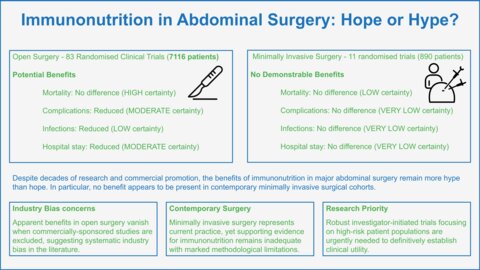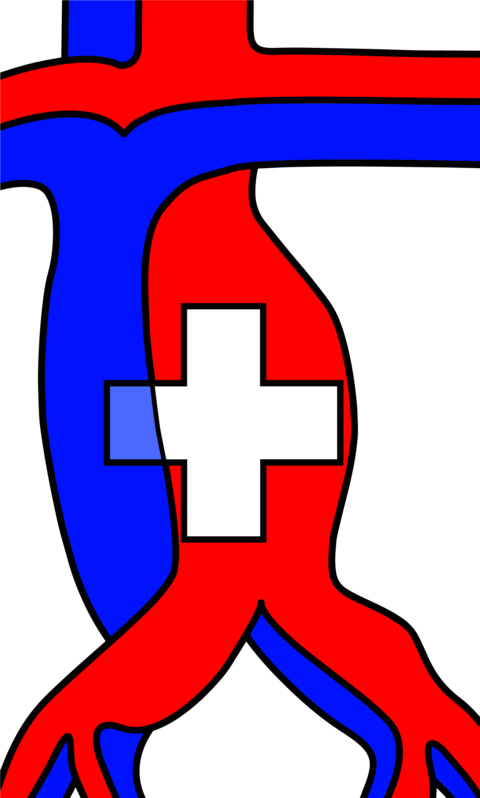Endovascular techniques for treating aortic pathologies have been implemented for approximately 30 years. Complex methods have been well established in specialized clinics, with focus shifting from feasibility to workflow optimization and procedure enhancement. Consequently, radiation exposure durations and amounts of radiation per procedure are increasing, both individually and cumulatively. This trend results in escalating radiation exposure not only for patients, but also for operating room personnel.1
The increasing radiation exposure poses a significant occupational health risk to personnel. Hospital administrators and medical supervisors have a responsibility to protect the health of their employees and minimize the risks associated with occupational radiation exposure. This includes three components:
1. Dose avoidance through careful procedural planning, use of innovative guidance tools, combined systems for imaging and visibility (e.g. IVUS, FORS) and optimization of workflow to minimize the need for radiation exposure.
2. Dose reduction when radiation is required by using the lowest possible radiation settings and limiting the duration of exposure.
3. Shielding of personnel using lead aprons, gloves, and other protective equipment to limit direct exposure.
This article focuses on the possibilities to reduce dose when radiation is required.
The technical operating room environment for aortic procedures comprises a spectrum, ranging from mobile C-arms to state-of-the-art hybrid operating rooms equipped with advanced guidance technologies.
The technical environment for imaging in hybrid operating rooms is an innovative and crucial aspect when aiming to reduce radiation dose. To enable ultra-low dose options of the HORs, introduction and development of knowledge about technical use and radiation protections is necessary to cultivate a dose-saving mindset.2 With the newest generation of HORs, dose reduction options increased while associated image quality can remain high.3 Necessary for this critical step is the correct setup and use of the exposure regulation software behind this technology by the respective surgeon and thus, the respective expertise. Also, image fusion options and navigation tools accompany the development towards even lower radiation doses.
The dose-reducing effects of shorter fluoroscopy times, reduced angulations, and other factors in line with the ALARA principle (“as low as reasonably achievable”) are well-known and have been published in recent guidelines. However, as the ALARA principle is a general guideline rather than a specific directive, certain questions a vascular surgeon encounters remain. What is “low”? What is “achievable”? What is “reasonable”? What are the benchmarks?
When approaching these questions from a scientific point of view it becomes clear that dose reporting of endovascular procedures is widely available among literature.4 However, articles evaluate dose values from a variety of endovascular procedures including complex and routine interventions without distinction. Also, reported units vary with dose area product and cumulative air kerma as the most frequent endpoints. Thus, the comparability between reports is low due to the absence of a unified reporting standard. Reporting disparities can even lead to misunderstandings and misinterpretations. In some countries national guidelines or recommendations exist referring to dose ranges that should be adhered to during respective endovascular procedures (diagnostic reference levels – DRL). Those DRLs refer to partly historic data sets and seem not to align with the opportunities of modern imaging environments.
To address this issue, implementation of a standardized dose reporting and a single widely accepted benchmarking approach is essential. The frequently published LEMA (Lucerne EVAR Milestone Approach) divides the intervention into procedural milestones (e.g. end of 2D/3D registration, end of cannulation of contralateral leg, cone beam CT). For each milestone dose levels (DAP) are gathered during the procedure.5 This yields several benefits. Firstly, during the procedure the surgeon can estimate whether the final DAP will fall into the intended corridor based on the DAP during the respective milestone. Intraoperative dose notifications give alert when exceeding the dose range for the respective milestone to facilitate the process. Adjusting imaging parameters in response to dose level deviations early in the procedure may enable the overall dose area product to remain within the intended corridor. If increased dose application is necessary during one step due to medical or safety reasons, it is still possible to compare dose ranges for the remaining steps. Secondly, comparability across different types of procedures is facilitated. E.g. intraoperative cone beam CT might not be routinely applied during standard EVAR but is frequently used during more complex procedures such as f/bEVAR accounting for a reasonable share of the final DAP. By division into milestones, dose for extra steps such as cone beam CT can be deducted from final DAP making even complex procedures with add-ons comparable.
The education of vascular surgeons has traditionally comprised teaching knowledge about relevant diseases along with practical surgical skills. In the near future, focus will shift from feasibility of procedures towards their precision and automation. Even young vascular surgeons spend relevant time in an HOR environment already as their standard OR surrounding due to increasing endovascular procedures. To support their training, the educational approach regarding the OR environment must become centered around HOR knowledge. Its equipment, technical conditions and associated mechanisms must become an indispensable part in education just like understanding wires, sheaths and catheters.
To include this into vascular surgeon’s education, online courses - as well as hands on courses - can be a sufficient tool to spread this knowledge in theory. However, education of vascular surgeons must also comprise practical training to create an “ultra-low dose mindset” with increased dose awareness. Use of virtual reality simulations can be supportive in demonstrating the influence of various software and hardware settings. Since procedures on patients are individual, incorporating an “ultra-low dose mindset” as a flexible pragmatic approach towards dose saving is important rather than a static dogmatic approach. Unplanned deviations from the operative course have and will always occur occasionally. However, well trained vascular surgeons will not only know when to save dose but also when to use it for patients’ safety in these situations.
The effects of ALARA are well known by vascular surgeons. But there is still dose saving potential beyond ALARA that has recently received increased attention in scientific literature. Standardization of procedures and unified dose reporting along with education strategies for vascular surgeons to cultivate an “ultra-low dose mindset” will be future levers to decrease dose even more during endovascular procedures towards routine ultra-low dose.
- Kirkwood ML, Guild JB, Arbique GM, Anderson JA, Valentine RJ, Timaran C. Surgeon radiation dose during complex endovascular procedures. J Vasc Surg. 2015;62(2):457-63.
- Modarai B, Haulon S, Ainsbury E, Bockler D, Vano-Carruana E, Dawson J, et al. Editor's Choice - European Society for Vascular Surgery (ESVS) 2023 Clinical Practice Guidelines on Radiation Safety. Eur J Vasc Endovasc Surg. 2023;65(2):171-222.
- Reeg A, Braun Y, Sunderbrink D, Hakimi M. Lowest reported dose area product of 2.4 Gy *cm(2) for ultra-low-dose endovascular aortic aneurysm repair of a standard infrarenal aortic aneurysm. J Vasc Surg Cases Innov Tech. 2024;10(4):101496.
- Hertault A, Bianchini A, Amiot S, Chenorhokian H, Laurent-Daniel F, Chakfé N, et al. Editor's Choice - Comprehensive Literature Review of Radiation Levels During Endovascular Aortic Repair in Cathlabs and Operating Theatres. Eur J Vasc Endovasc Surg. 2020;60(3):374-85.
- Hakimi M, Reeg A, Celi de la Torre JA, Jung G, Reyes Del Castillo T, Roos J, et al. Lucerne milestone approach for benchmarking and education: Towards ultra-low dose endovascular aortic repair. J Vasc Surg Cases Innov Tech. 2025;11(2):101705.












